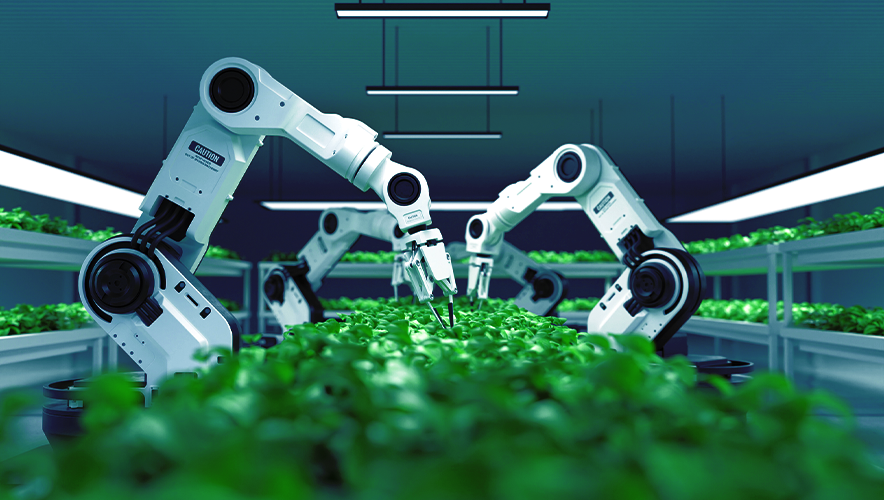Robotics and Their Place in Security—Are They Inevitable?
 Robots and robotics have been in our lives for many years, serving valuable purposes. Designed with Meccano parts and powered by a single electric motor, Griffith P. Taylor built the first known ISO compliant robot in 1937. It had five axes of movement, including a grab and rotation, and was automated by using paper tape with punches in it to energize solenoids—creating movement.
Robots and robotics have been in our lives for many years, serving valuable purposes. Designed with Meccano parts and powered by a single electric motor, Griffith P. Taylor built the first known ISO compliant robot in 1937. It had five axes of movement, including a grab and rotation, and was automated by using paper tape with punches in it to energize solenoids—creating movement.
Today, the U.S. National Institutes of Standards and Technology classifies manufacturing robots into four categories: articulated robots, Selective Compliance Articulated Robot Arms (SCARA), Delta, and Cartesian.
But these are only types of industrial robots. Other types of robots are being increasingly used, in healthcare such as to accomplish the LASIK surgery I had for my correction seven years ago, to undersea, military, and space robotic solutions. Others use cases include teleoperate manipulators, prosthetics, micro-robots, consumer robots, enterprise robots, unmanned aerial vehicles, and more.
So, what are robots, really? To discuss this, we must deny our natural impulse to equate actual robots to the science fiction image that has been created for us by media—everything from the scary robots like The Terminator and HAL 2001 to the lovable and highly intelligent R2D2 and C3PO of Star Wars fame.
At their core, commercial robots assist human beings. They perform dangerous tasks that humans cannot safely do, like bomb disposal robots. They also perform repetitive mundane tasks that humans do not want to do like product sorting or spot welding and precision tasks like microsurgery.
At their core, commercial robots assist human beings.
Breaking Down How Robots Operate
Robots often use artificial intelligence (AI) and machine learning (ML) to perform their functions. According to Britannica, “artificial intelligence (AI) is the ability of a digital computer or computer-controlled robot to perform tasks commonly associated with intelligent beings. The term is frequently applied to the project of developing systems endowed with the intellectual processes characteristic of humans, such as the ability to reason, discover meaning, generalize, or learn from past experience.”
ML, according to Microsoft, is defined as “the process of using mathematical models of data to help a computer learn without direct instruction. It’s considered a subset of artificial intelligence (AI). Machine learning uses algorithms to identify patterns within data, and those patterns are then used to create a data model that can make predictions. With increased data and experience, the results of machine learning are more accurate—much like how humans improve with more practice.”
I use the following simple analogy to explain AI and ML. When I make a grocery list with my Amazon Alexa, I tell Alexa to add eggs, flour, and oil to my shopping list. I then tell Alexa to export that list for fulfillment, and a day later, my groceries arrive at my home.
Using Alexa to build and fulfill a shopping list is a rudimentary example of using AI. After creating my list, if Alexa were to ask me, “Jeff, do you want to order butter too? The last time you ordered eggs, flour, and oil, you were baking a cake, and you may have forgotten to add eggs to your list.” This would be an example of ML. Another example of machine learning is your Amazon shopping experience. The more you use it, the smarter Alexa gets and recommends additional items you may like or even need.
Robotics in Security
In the security industry, we are experiencing a shift. The shift is especially apparent in the guarding industry. Due to COVID-19, other physical risks in the guarding industry, and low pay, many guarding companies are experiencing what is commonly referred to as the Great Resignation. In the United States alone, more than 38 million workers quit their job in 2021.
Because of the issues mentioned above, many service providers cannot fully staff existing contracts. Many of my clients only have 65 percent to 75 percent of their contracted staffing needs met.
Additionally, in the United States, many organizations are dependent on Commissioned Law Enforcement to enforce state and local laws for transit operations, malls, and public utilities. Most times, these are contractual arrangements. As a result of the present-day risks associated with law enforcement, many officers leave the profession, leaving police agencies unable to fulfill their contracts. The situation has created an even greater need for highly qualified security professionals.
You would think law enforcement professionals leaving their industry would increase the pool of qualified and available personnel for security assignments. But if you speak with the Human Resources Department of many guard companies, you will hear that they have an extremely difficult time finding qualified employees.
This makes a strong business case for robotics because of the shortage of qualified and available people in the guard industry. There are several areas where a robotic security device can assist the guarding industry. The primary area is utilizing a robotic device to accomplish repetitive but necessary tasks presently being performed by humans. These could include health checks, lobby monitoring, processing an access credential, or visitor management tasks. Additionally, robotic devices could be used for monitoring behavior, patrol support (human patrols that are informed and supported by a robotic device), and patrols.
Robotic devices can also be used to enhance security functions performed by humans, such as vehicular security patrols. Criminals use advanced techniques to identify potential targets, often engaging in pre-operational surveillance. This typically includes making visits to the intended target and taking photographs to determine the presence of security and frequency of patrols. At best, a vehicle patrol service is a hit or miss proposition because the criminal may not be there when the patrol comes through. Additionally, vendors of patrol services are financially motivated to be efficient—most likely result in over-committing a patrol, so they only spend the minimum amount of time at a single client’s site.
The answer to this dilemma resides in a robot that increases the efficiency of the patrol for a more effective response and cost savings. For instance, robots using AI and ML to continuously monitor activity at multiple locations. The robots would communicate with a human patrol officer through a smartphone application, alerting the officer when activity is detected. This would provide a less costly service for end users, greater efficiency for the vendor patrol service, and increase the ability to interrupt criminal activity. The mundane task of monitoring would be left to the robotic device, while the critical thinking skills of the human would be maximized in the response.
There is a significant business case to be made for incorporating robots into a physical security program. The first business factor is cost-benefit. Based on a recent price quote from a manufacturer, many robots cost between $3.00 and $6.00 an hour to operate. Further, robots do not incur human resource costs for hiring, onboarding, training, benefits, adverse behaviors, and termination. Robots do not require intense supervision, and they do not need to submit hours for pay to processing.
Robots also do not take time off. They do not get sick, miss shifts, or require vacations. In short, robots are reliable, with 99.99 percent uptime.
Robots, however, are electronic devices that require maintenance. Like your computer or smartphone, much of that maintenance is in the form of updates and patches—which can occur during times of less activity.
Based on hourly rates alone, replacing a single 168-hour guard at $25.00 an hour (fully burdened) with a $3.00 an hour device would see an immediate cost savings of $3,696.00 per week or $192,192.00 a year. When you add the significant back-end Human Resources costs to this, you have an exceptional business case to move towards robots.
For one client, we estimated that replacing 48, 168-hour lobby guards who perform health checks, visitor management, and monitor a lobby with a robotic device would have a direct cost-benefit of $180,108.00 per week and $9,365,616.00 per year—a very significant saving.
When you consider the reliability, changed business models, and cost-benefit, you will understand why I feel the move to robotic devices is inevitable for more reliable service.
Jeffrey A. Slotnick, CPP, PSP, is an industry leader, trusted advisor, ESRM advocate, and security management professional focused on Quality Management systems and leading-edge technologies in the physical security space. Slotnick is a highly regarded public speaker, author, and media consultant. Connect with him at [email protected].
